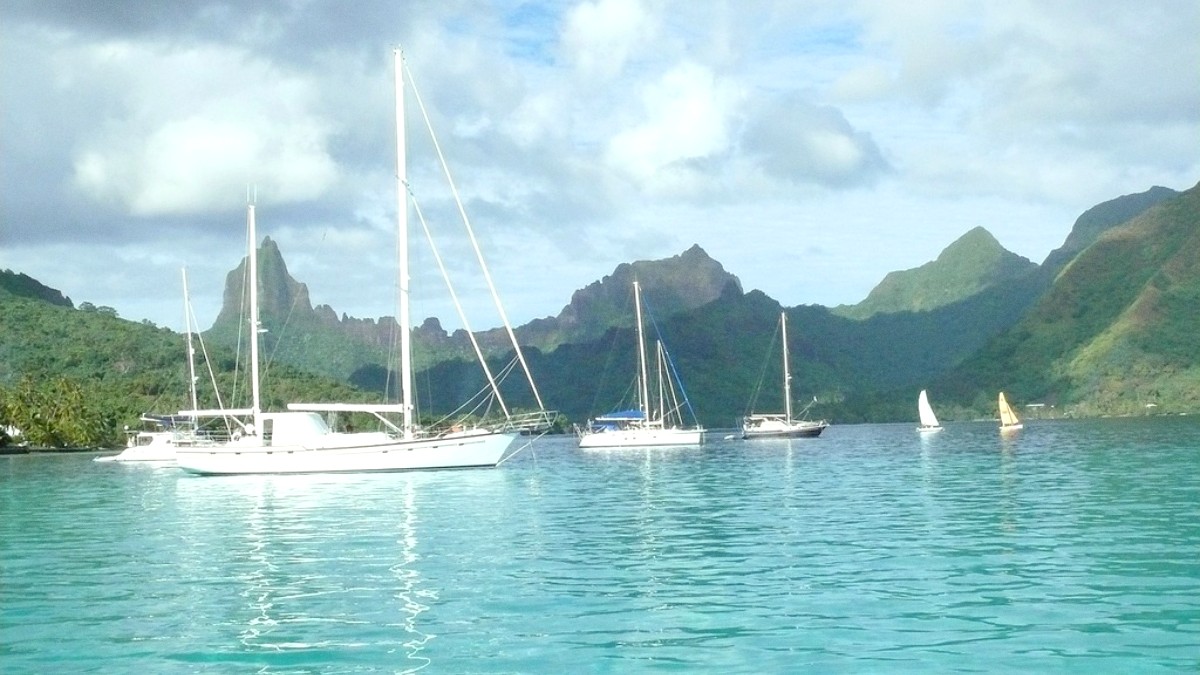
Tahiti And French Polynesia
Traditional Polynesian cooking methods, like the Ahi ma'a (earth oven), combine with ingredients like taro, breadfruit, and fresh fish. French culinary techniques and ingredients integrated over time, creating a unique fusion.
This history gives the cuisine its rich character, marrying simplicity with refinement. The abundance of the ocean and the fertility of the land dictate many dishes.
Using "Ia Ora na" (hello) when entering a restaurant and "Mauruuru" (thank you) when leaving displays appreciation.
Casual to smart casual remains appropriate, depending on the establishment. Swimwear is for beaches and pools, not dining areas.
Tipping is not customary or expected. Service charges are typically included in prices.
The national dish of French Polynesia. Raw tuna marinated in lime juice and fresh coconut milk, mixed with diced vegetables. Refreshing and flavorful.
Universally at restaurants, Roulottes, and guesthouses.
A traditional Polynesian feast, often served for special occasions. Dishes cooked in an Ahi ma'a (underground earth oven), including roasted pig, breadfruit, and taro.
Experienced at cultural centers or specific 'Maa Tahiti' events.
Freshly caught fish, like tuna or mahi-mahi, grilled to perfection and served with rice or local vegetables. Displays the freshness of the seafood.
Widely at most eateries.
Reflecting Chinese influence, this stir-fried noodle dish is popular at Roulottes and snack bars. Includes chicken, shrimp, or vegetables.
Firi Firi are twisted doughnuts for breakfast. Po'e is a sweet, pudding-like dessert from taro or banana with coconut milk. Fresh pineapple desserts are also common. Use a Translation app (e.g., Google Translate) to communicate dietary restrictions.
Moorea presents a spectrum of dining experiences to suit various tastes and budgets.
High-end resort restaurants display gourmet international and Polynesian cuisine, often with stunning lagoon views.
Independent restaurants offer a mix of local and international dishes in a casual setting, a good balance of quality and price.
Roulottes (food trucks) provide budget-friendly and authentic local food. Snack bars and supermarkets also present options.
Vegetarian dishes exist but can be limited outside large resorts. Vegan options display more challenge.
Focus on fresh fruits, rice, and boiled vegetables. Clear communication in French is helpful.
Gluten-free choices display challenge due to common use of baguettes. Fresh seafood and rice-based meals are generally safe.
Always communicate severe allergies to staff. Cross-contamination exists in smaller kitchens.
Learn to prepare local dishes like Poisson cru.
Discover pineapple cultivation and sample fresh produce.
Seek local calendars for special food-related gatherings.
Enjoy traditional meals on secluded islets.
The best option for budget-friendly and authentic local food, gathering in specific spots especially in Maharepa in the evenings.
Wide variety: Poisson cru, grilled fish, Brochettes, Chow mein.
Champion and Super U offer prepared foods, fresh produce, and a wide range of ingredients for self-catering.
Significantly reduces dining costs for longer stays.
Small markets in villages like Maharepa offer fresh fruits, vegetables, and sometimes local snacks.
Many resort restaurants offer Italian, Japanese, and other international cuisines.
Many lagoon tours include a traditional Polynesian picnic on a secluded Motu (islet). This often features freshly prepared Poisson cru, grilled fish, and other local delights, served on a palm-frond mat.
Cultural centers (e.g., Tiki Village Cultural Centre, check current status) or large resorts host evening shows featuring traditional music, dance, and fire-walking.
Often part of cultural shows, a traditional feast cooked in an underground earth oven (Ahi ma'a), featuring roasted pig, breadfruit, and taro.
A small local market offering fresh produce and some local crafts.
Provides insight into local commerce and daily life.
Seek small roadside stands for fresh, seasonal fruits, especially Moorea's famous pineapples.
Directly supports local farmers.
Cuisine remains largely consistent across Moorea. The island's identity with pineapple means this fruit display prominence.
Dining in Moorea is generally relaxed and informal, especially outside of high-end resorts. "Island time" applies to service.
Image: Poisson Cru (Wikimedia Commons) by Tahiti Tourism, licensed under CC BY 2.0.
For travelers with specific dietary needs, preparation and clear communication enhance the experience.